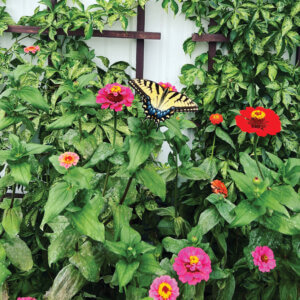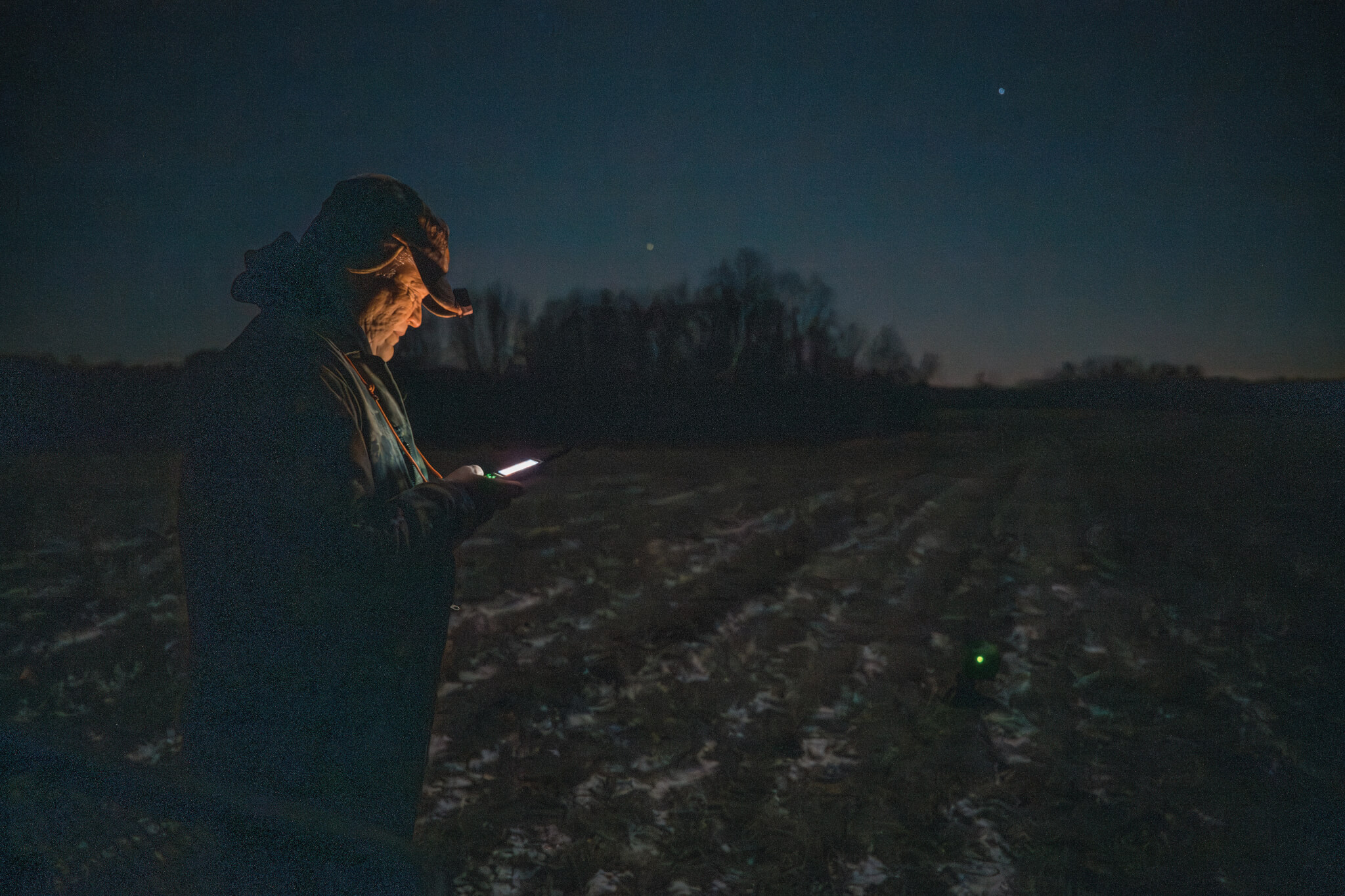
Coyote hunting is a growing sport in West Virginia—but what does it entail?
This story was originally published in the March 2024 issue of Wonderful West Virginia. To subscribe, visit wonderfulwv.com.
Written by Devin Lacy
Photos Courtesy of West Virginia Department of Commerce

John Partain prefers to hunt coyotes after night has fallen, so it was a cold and quiet December evening when he and photographer Tyler Evert stared out into the darkness in hopes of seeing a small pair of eyes look back. When they finally did, it seemed as though they were the ones being watched. “We were watching them howl and bark at us from about 200 yards. There were only two, but it sounded like a big pack.” A coyote’s call at night can be an eerie sound for most of us, but Partain and other coyote hunters look forward to hearing it.
Partain was introduced to the sport of coyote hunting by a colleague while working as a DNR officer in Florida, and he instantly knew it would be a new fascination. An avid hunter with a wide range—turkey, deer, alligator—he believes in knowing your prey, so he immediately sunk into researching and learning all he could. “The more you know about them,” he says, “the more you know how to deal with them.”
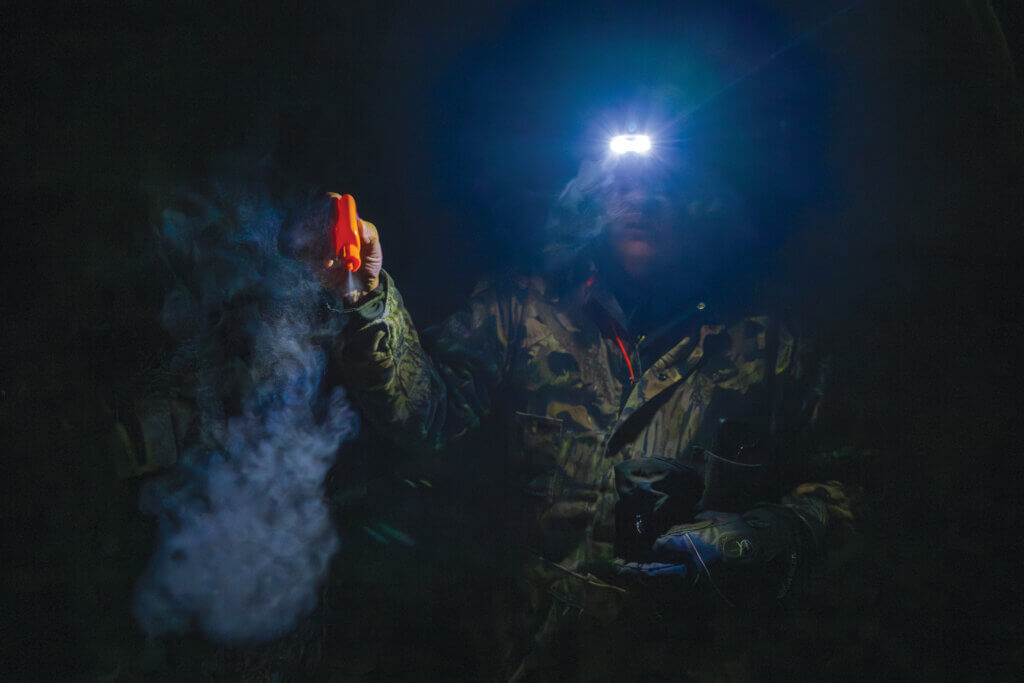
About four years ago, he was on a fall archery hunt for deer on his property in Looneyville—we see the connection, too, and the irony is not lost on us—when he noticed something out of the ordinary. “A lot of the does didn’t have the yearlings with them, and I knew something was wrong.” Coyotes, as opportunistic as they are, had to be the culprits. “That’s when I started getting interested in doing it.”
“It” was helping keep coyote populations from harming livestock and giving native species a better chance to thrive. Over the years, he has assisted farmers, cattle ranchers, and property owners in protecting their animals through what he now sees as his job: coyote hunting. “I had someone tell me a month or two ago, ‘You know, since you started hunting coyotes, we have groundhogs we didn’t have—more small game and rabbits.’ That’s what it’s about, giving native species a chance.” He’s so dedicated to that, in fact, that his business card for Salty Dog Coyote Reapers shares the sentiment: Saving native wildlife and livestock one shot at a time.

Creatures of Opportunity
The eastern coyotes that inhabit West Virginia—and, according to the National Park Service, the entirety of the East Coast and over into Ohio—aren’t completely what they seem. Despite their name, the eastern coyote is, at the DNA level, a hybrid of western coyotes and wolves. Prior to settling in the East, coyote populations were widely kept at bay by larger regional predators, two of which have since disappeared from our region: mountain lions and gray wolves. As these predators became extirpated from West Virginia and surrounding areas by the early 1900s, coyotes were finding themselves largely uncontested in the animal hierarchy the farther east they moved.
As coyotes expanded their range, they were also moving into areas where wolf populations were decreasing, leading to mating between the two related species. As these hybrids grew and reproduced, they continued to move east, following the call of the subsequently rising deer populations. They have thrived here ever since, first appearing in West Virginia sometime in the mid-to-late 1900s.
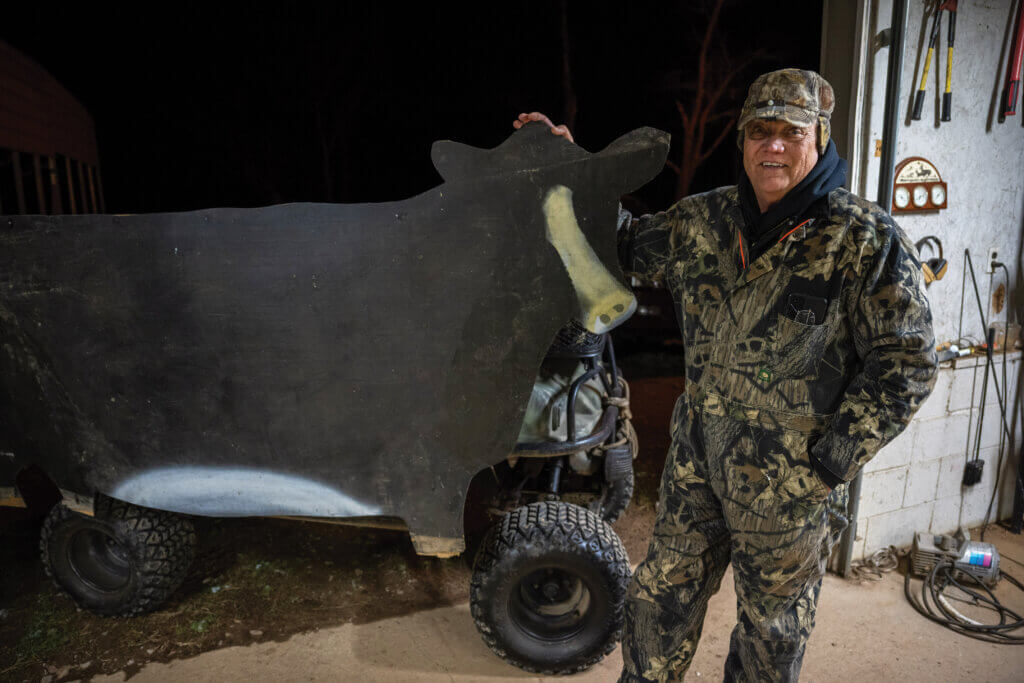
Who Sees Who First?
Coyotes are what many describe as opportunists. On top of that, coyotes are also incredibly adaptable and quick to learn, leading to their sly and calculated appearances in cities and neighborhoods. They are typically most active at night or in the early morning hours, especially when located around humans or when the temperatures are warmer. While they normally avoid humans, our trash, domestic pet food, and even the pets themselves have been known to entice a hungry coyote right to the front yard. This cunning and sense of preservation is what causes the most trouble for hunters, as coyotes are quick to take in their surroundings for potential threats and avoid areas where they know one exists.
Want to learn more about West Virginia’s wily coyotes? Check out “Coyote Coup” in the January 2023 issue of Wonderful West Virginia.
Partain might hunt for several nights a week and never see a coyote, though he knows they are present in the area. “Being a canine, they can smell a lot of smells at a time. You’re fighting their nose,” Partain says. “It’s the nose that is going to save them.”
Their ears are also keen and discerning. When hunting, Partain typically starts his call with one of several types of howls, adjusting to the time of year and how often he’s hunted in that area. “If you keep going to the same place every night with the same calls, coyotes are going to get used to it—especially if you shoot and miss.” Partain himself has been through at least four different calls over the years. As more people took up the sport in West Virginia, playing the same calls in the area as he did, he found less and less success until he switched it up. The particular sound a hunter uses, the pitch, volume, and frequency all matter, he says. It has to be natural, or the coyotes will notice the difference.
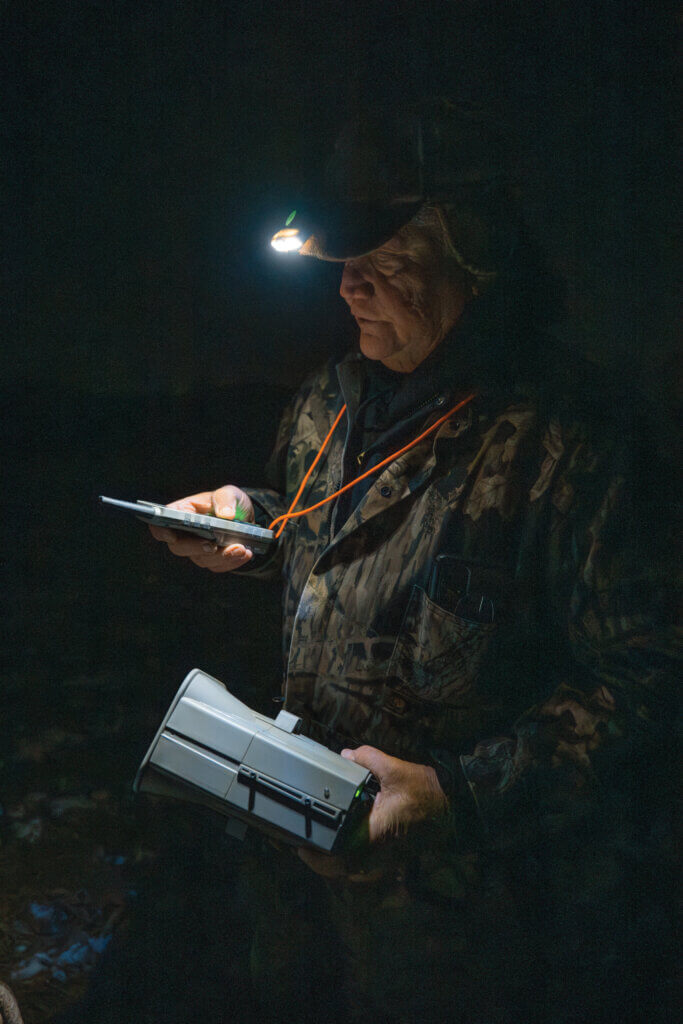
“Towards the end of the year, you’re seeing the younger ones who haven’t been messed with before. Those are the first ones you’ll get.” Partain explains that hunters who are going to the same places every night with the same calls will find themselves less likely to harvest one, as coyotes are curious but smart creatures who will learn to avoid that area. Partain likens harvesting an older adult male coyote to a 10-point buck—years in our hills and hollers have taught them a thing or two.
Coyotes also, like dogs and cats, have eyes built for seeing clearly at night, giving them their own kind of night vision. But hunters are adaptable, too. While coyotes prefer the cover of night, night vision and thermal imaging technologies allow hunters to meet coyotes at their level in a way they can’t without the assist. And for the real nature lovers, it’s a gateway into something more. “The world comes alive at night with thermal,” Partain says. “We see loads of different things at night. That makes it a lot of fun.”
These technologies, however, are important for more than just making the hunt easier and the long nights more interesting. “It’s about safety for you and making sure it is a humane kill.” Newer thermal imaging technologies make it easier to identify what you see, leading to clearer and safer aim and a better idea of exactly what you’re sharing the darkness with. Artificial lighting and active illumination are also options that make it easier and safer for hunters to go out at night without disturbing wildlife.
A big concern for many coyote hunters and pet owners? Fido getting confused for Wile E. after the sun goes down. However, careful hunters learn ways to tell a difference, wanting to prevent an accident as much as possible. “You have to watch the tail through the thermal,” Partain says. “A dog’s tail will be in an up position—a coyote’s will be down.” While he has never personally come across a dog while coyote hunting in his years in the sport, he still urges hunters to simply be cautious. “You have to be very careful and can’t get rushed. Be patient and pay attention to what you’re doing.” To Partain, coyote hunting is a learning experience. “And it’s a humbling one when you do it. I’ve been able to go out with several people, and I want people to learn how to do it. It’s good for the environment and is a lot of fun.” While he admits it can be a bit cold while out at night, he urges hunters to get involved, particularly during the winter months when most seasons are closed. “They’re always there,” Partain says, “you just have to get there before they see you.” And take it one shot at a time, as his card reads. Though, sometimes, it might take two.
A Quick Glance
Some regulations to be aware of before heading out.
- Coyote hunting takes place year-round, and there is no bag or season limit. However, it is limited to open fields during closed small game seasons.
- Artificial lights may be used on private property to hunt coyotes September 1 through December 31. Approval from DNR Police or a District Office must be obtained in advance.
- Electronic calls, artificial light of any color, and night vision technology, such as thermal imaging, active illumination, and image intensification, are also legal.
- Shotguns with No. 2 or smaller shot may be used. Rifles and handguns of no larger than a .22 caliber are also permitted.
- The 2023–2024 trapping season for coyotes took place November 4, 2023, through February 29, 2024. To see the 2024–2025 season dates, visit www.wvdnr.gov/hunting-seasons after June 2024
WVDNR’s yearly “Hunting and Trapping Regulations Summary” is a great resource regarding any season you might be interested in. To learn more, visit www.wvdnr.gov or reach out to your local DNR District Office.





